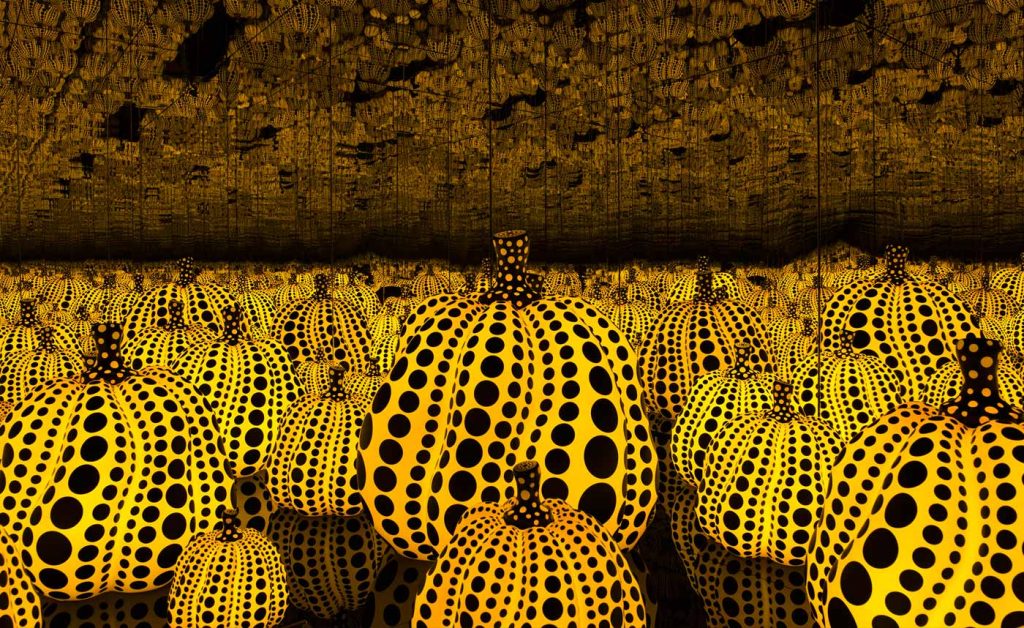Manjeera
22 MARCH, ON THIS DAY
Our earth is only one polka dot among a million stars in the cosmos. Polka dots are a way to infinity. When we obliterate nature and our bodies with polka dots, we become part of the unity of our environment’.
-Yayoi Kusama
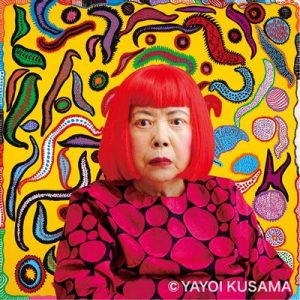
Yayoi Kusama is a world-renowned contemporary Japanese artist known for her avant-garde style that is characterized by the repetitive and obsessive use of polka dots. She has made a mark in the art world and beyond and is easily recognizable due to her very distinctive style, earning her the title of the princess of polka dots”. Kusama’s work has been exhibited in museums and galleries all over the world and though it eludes a clear classification, most of her work is very conceptual in nature, with touches of pop art, surrealism and expressionism. Her work has sold for about up to 10 million US dollars and she is the highest selling female artist living right now.
Kusama’s adolescence: art and hallucinations
Yayoi Kusama was born in Matsumoto, Japan, in 1929. As a child, she experienced vivid hallucinations, which she later attributed to her lifelong struggles with mental illness. Most of the seeds of influence that gave her art its distinctive style were sewn from her childhood. Kusama recounts how from a very young age she would carry a sketchbook around to her family’s nursery and sit among the flowers. She used to hallucinate here, dreaming up that the flowers were talking to her, in a very Alice in Wonderland sort of way, albeit more terrifying. They wanted to multiply and swallow her up, engulfing her completely. She was obsessed with dots back then as well, if her early drawings are any indication.
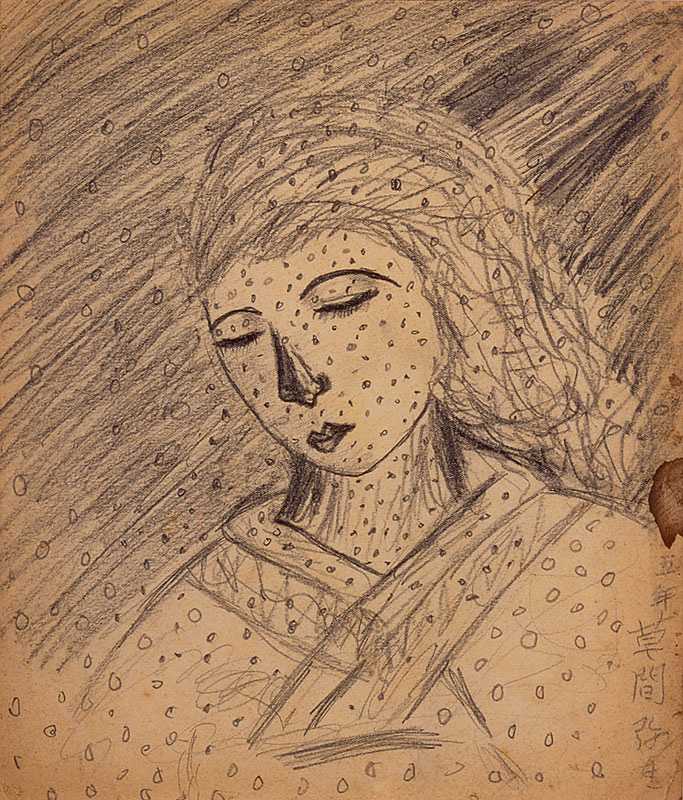
Courtesy: Tate
Kusama termed these interactions and hallucinations as depersonalisations, and these only increased as her family dynamic gathered more tension. Her mother vehemently opposed Kusama’s choice to paint, going as far as to tear the canvas, emphasising on the artist’s need to get married.
When she was 13, she was sent to work at a military factory, following the attack on Pearl Harbour. War played a huge role in Kusama’s art; she lived through the air raids and turmoil that enveloped her country during World War II.
She studied traditional Japanese painting, the Nihonga, in the Kyoto Municipal School of Arts and Crafts and later moved the United States, when she found Western avant-garde ideas more attractive than the Japanese styles. Here she developed her own distinctive style and left a mark in the art scene pretty soon.
Polka Dots and Infinity
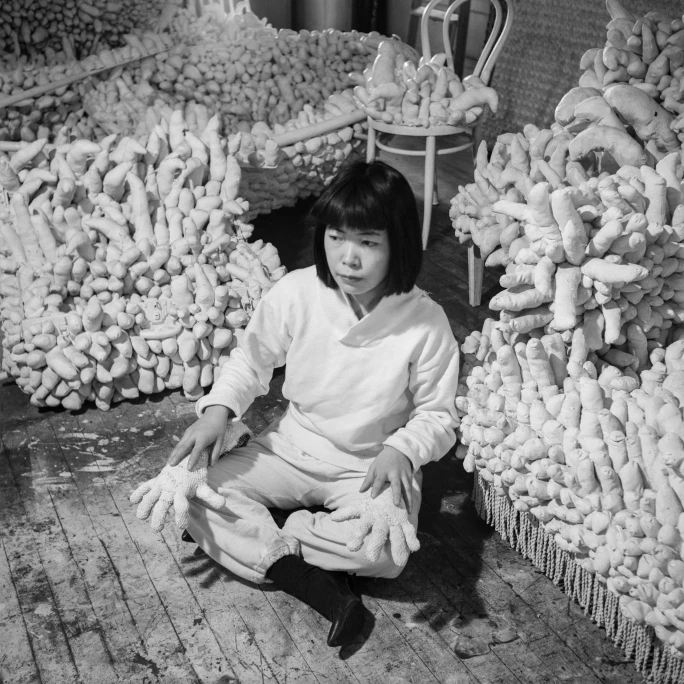
Courtesy: Estate of Evelyn Hofer
Kusama is known for the use of bold colours and the use of unusual surfaces as her canvases; be it the floor or the walls. She started experimenting with this style as far back as the 1950s and has only gained more popularity.
It is undoubtedly true that fundamentally, Kusama’s art explores the fascination behind what it is to experience the infinite. Her art is a celebration of life and creativity, a testament to the power of the human imagination. Polka dots are an integral to Yayoi Kusama’s artistic style; they are the signifiers of the limits of human consciousness and the limitless possibilities of the universe. The dots too are a remnant of her childhood– she was struck by the way the dots seemed to expand and multiply, creating an illusion of infinity.
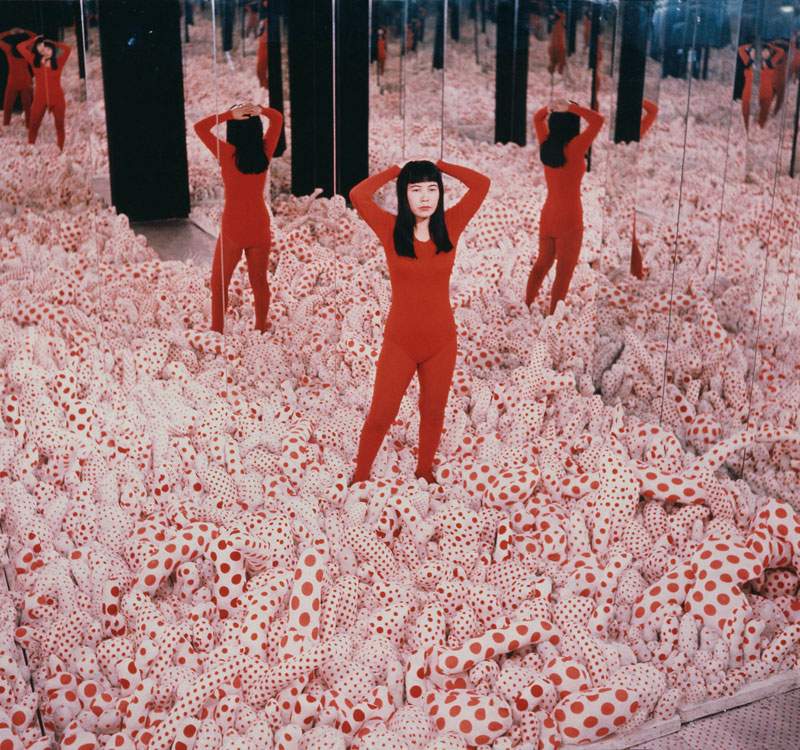
Courtesy of the artist
For Kusama, the dots are a symbol of the universe, representing the interconnectedness of all things. They create a sense of repetition and infinity, blurring the boundaries between the self and the universe. Her most popular pieces are her Infinity rooms, where she combies polka dots and mirrors to create the illusion of an endless expansive space. This can be seen in her 1965 installation of her Infinity room with mirror, where the mirrors reflect the surroundings endlessly.
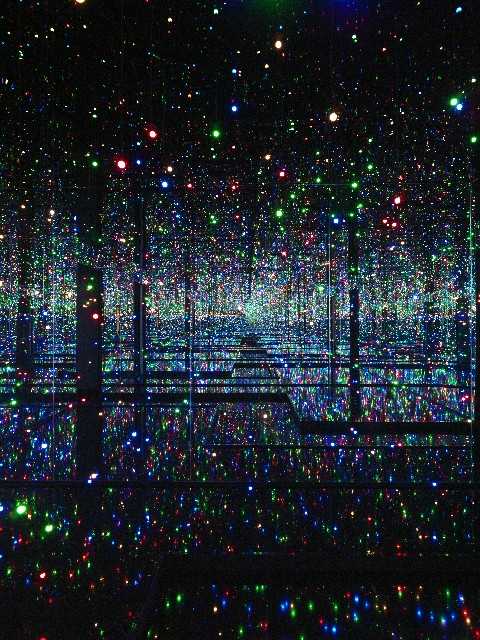
Courtesy: Ota Fine Arts
In recent years Kusama has expanded to using new technology to create her infinity rooms. She created one in 2011, where she used thousands of flashing LED lights in mirrored rooms to create her illusion.
Why is Kusama so crucial?
Kusama’s art is important because of what the polkas actually represent: one of the core themes of her work has always been the exploration of mental illness and the experience of living with psychological disorders. The polkas and their countless multitudes can be viewed to represent the mind-state of the neuro-divergent, addressing issues of obsession, repetition, and the fear of losing control. But Kusama’s art is not about the pain of the process, it is about joy and celebration. Her dots teach us that the world can be experienced differently by many people and there is nothing to be ashamed about when you are expressing yourself.
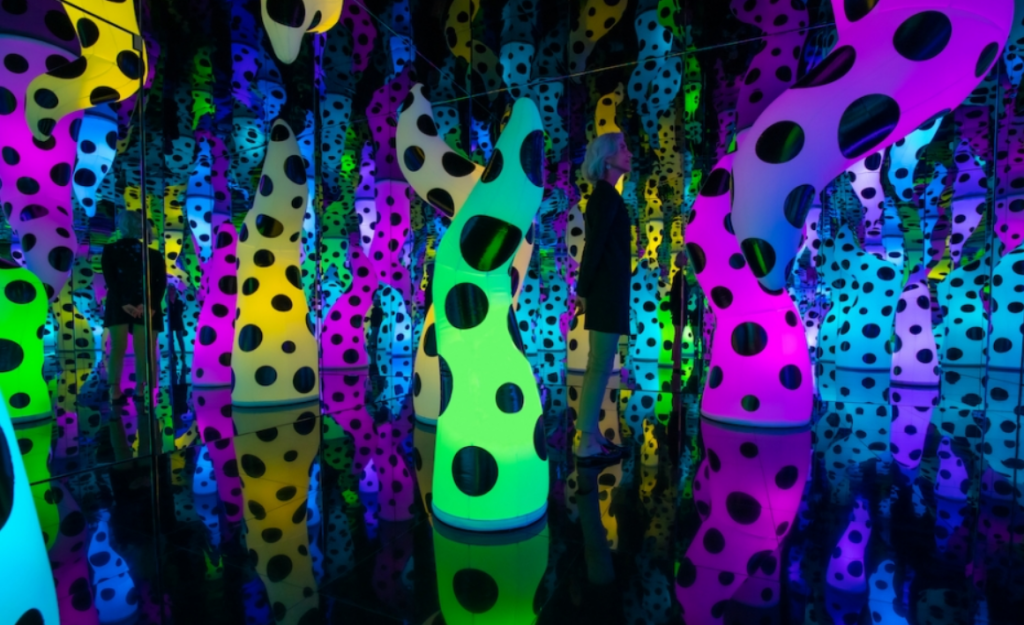
Courtesy: ICA Boston

